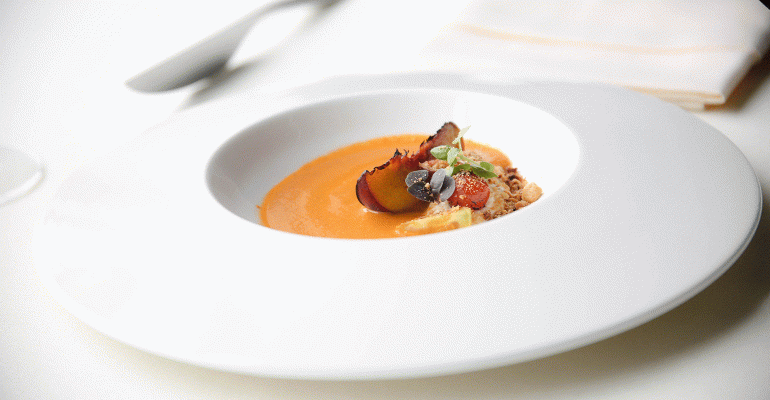There’s a lot to be said for the universality of soups. Every culture has them and, despite their reputation as cold-weather food, consumers eat them all year long, according to many restaurateurs. As with many traditional foods, however, chefs are finding ways to tweak traditional soups to make them their own and to appeal to guests who are looking for more vibrant flavors.
“The challenge in soups is to try and accommodate a lot of different palates and preferences all at the same time,” said Erica Gillespie, director of store development for Hale and Hearty, a 23-unit chain based in New York City that specializes in soup.
“Some people want a full meal in a cup, which we are able to accommodate with richer, more satisfying soups like Broken Lasagna or Chicken Sausage Jambalaya,” she said. “Other people are specifically looking for healthier, lower calorie options like our Chicken Vegetable, Spicy Wild Mushroom with Red Miso, or Ten Vegetable soups. And then there are those people who look at soup as more of an accompaniment than a complete meal.”
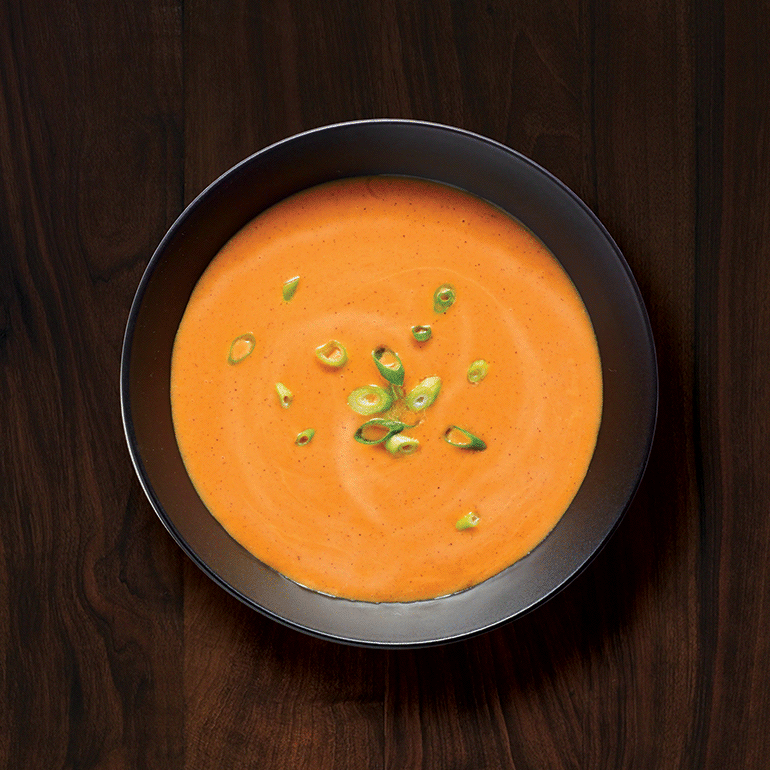
Butternut squash soup at Hale & Hearty
She said a new ginger chicken broth will be added to the menu this fall, as well as a new mushroom broth.
“These can be great for lunch or as a mid-afternoon snack to sip on the go,” she said. “They are low in calories, but full on flavor, which is a very important need to satisfy these days.”
She said adding seasonal vegetables — butternut squash in the fall, for example, or corn in the summer — is easy.

Broken lasagna soup at Hale & Hearty
That’s what Andrew Garbarino, chef of The Twisted Frenchman in Pittsburgh, does with his late summer soup of heirloom tomatoes, grilled peaches and hazelnuts.
“I was at a farmers market four years ago and I was talking to a farmer about his tomatoes,” he said. He ate one, and then sampled a peach. “The flavors were both in my mouth at the same time, and I got this wild idea.”
He played with a peach-tomato salad, but that seemed kind of obvious, and he wanted a warm dish for the end of summer as the nights cooled. He originally planned to purée the peaches, but he ended up dicing them instead, for contrast and texture. He already had hazelnuts that he was using in a Beluga caviar dish and liked them so much with his new soup that he used them in that instead.
“I ended up doing a different caviar dish,” he said.
To make the soup, he chars the tomatoes on a hot grill to give them a subtle smoky flavor, and gives the same treatment to carrots, onions and fennel. Then he slowly stews them in a pot with butter, cream and garlic for 1.5 to 2 hours.
“We want a low simmer for quite an extensive period of time,” he said. “We want to kind of cook out some of the really acidic tomato flavor that you get sometimes and bring out that roasted tomato flavor, and the sweetness of the carrot.”
He cuts the peaches in half and burns the base of them on a 1,000-degree French flattop. Then he chops them into fine dice and adds them to the soup so each bite gets a combination of sweet peach and burnt peach flavor. He garnishes the dish with whipped cream into which he folds peach purée and toasted ground cardamom and tops it with toasted chopped hazelnuts and micro basil.
The result is the acidic sweetness of the tomatoes and the sugary sweetness of the peaches.
“The two contrasting sweetnesses go nicely together,” he said. “Now it’s one of those things that my guests expect every single tomato season.”
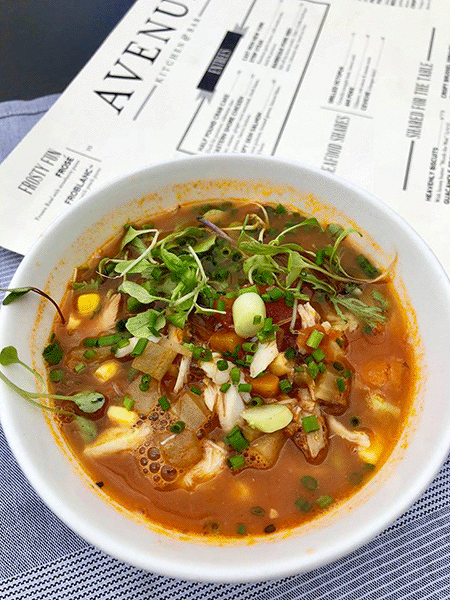 Seasonality is also the name of the game for the Maryland crab soup at Avenue Kitchen & Bar in Baltimore, where co-founder Bill Irvin starts with a stock made from crab bodies thickened with potatoes. Irvin adds corn, carrots, celery, sweet onion, potatoes, green beans and lima beans.
Seasonality is also the name of the game for the Maryland crab soup at Avenue Kitchen & Bar in Baltimore, where co-founder Bill Irvin starts with a stock made from crab bodies thickened with potatoes. Irvin adds corn, carrots, celery, sweet onion, potatoes, green beans and lima beans.
“Traditionally the Eastern Shore fisherman take the harvest from their fields and add that to the stock,” he said. Irvin follows suit.
McAlister’s Deli is also following the seasons this fall, when corporate executive chef Will Eudy brings back his autumn squash soup to the Atlanta-based chain’s roughly 435 restaurants.
“It’s something that’s really been a hit with our guests,” he said, adding that, although soup sales dip a bit in the summer, they are popular all year long.
All of McAlister’s soups are manufactured for them, and this one is made with a variety of roasted hard squashes, sweet onion and vegetable stock, along with cardamom, allspice, cinnamon and a touch of cream.
“It’s a really good soup, not overly sweet and with a really good flavor profile,” he said.
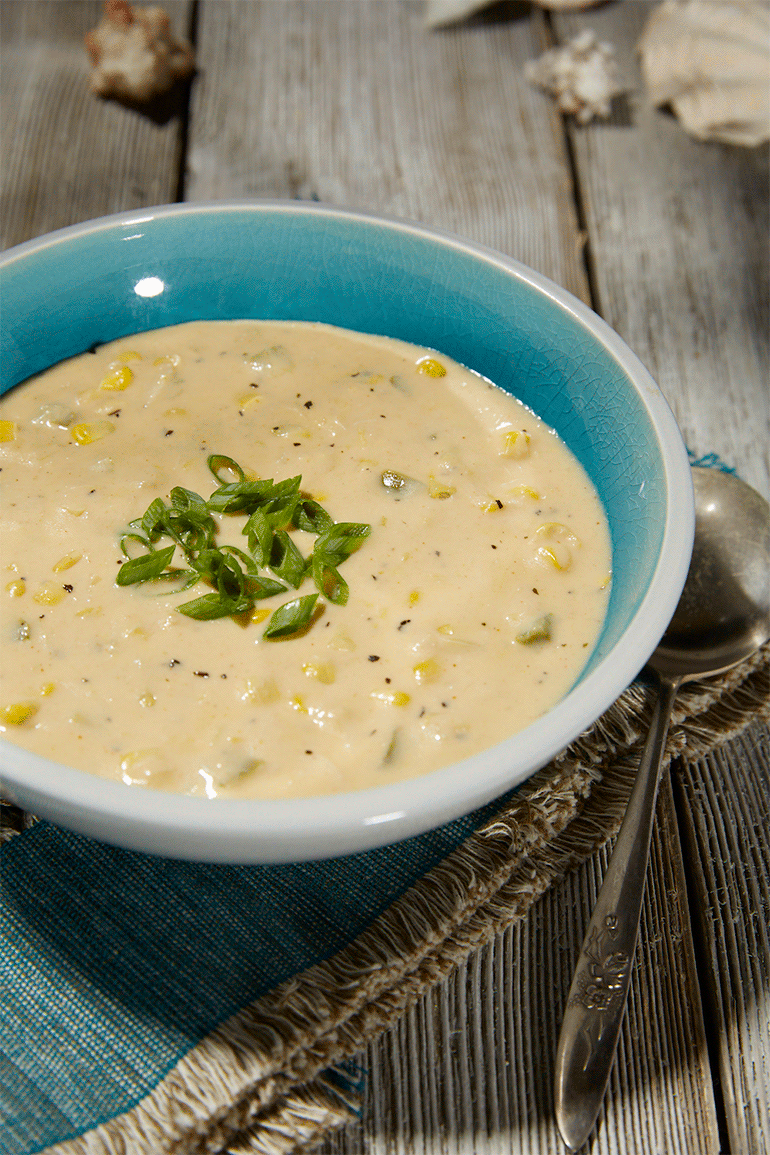 McAlister’s is also getting ready to roll out a blue crab and sweet corn chowder, Eudy said.
McAlister’s is also getting ready to roll out a blue crab and sweet corn chowder, Eudy said.
“We’re not going to call it she-crab soup, because it’s not really, but it’s a classic blend of blue crab, corn traditional mirepoix [carrots, onions and celery], crab stock and a little heat,” he said.
He’s also testing a French onion soup garnished with a traditional crunchy crouton with Gruyère on top, and he plans to use that same soup as the au jus for a French Onion Chicken Sandwich that’s in test.
“It should be really cool,” he said.
Also coming out this fall is a roasted mushroom soup made with shiitake, portobello and cremini mushrooms, chicken stock, garlic, thyme and a little cream, finished with sherry.
Not rolling out: Cauliflower soup. As trendy as the vegetable is these days, McAlister’s Deli customers didn’t order it as soup.
“They said, ‘It’s too weird for us’,” Eudy said.
 Although soup is traditionally a low food-cost item, and an opportunity to do something tasty and profitable with leftovers, McAllister’s soup actually has a higher food cost than most of the chain’s other items because there’s no labor involved.
Although soup is traditionally a low food-cost item, and an opportunity to do something tasty and profitable with leftovers, McAllister’s soup actually has a higher food cost than most of the chain’s other items because there’s no labor involved.
“A high part of the cost [for soup] in limited-service restaurants is freight,” he said. But with basically no labor, he can invest in premium mushrooms and crab.
At Zoup!, a chain of just under 100 units based in Southfield, Mich., seasonality is driven more by theme than ingredients. This fall the chain is offering its Brewhouse Cheddar soup, made with mild cheddar cheese, English pale ale, carrots, celery, onions, garlic, salt and pepper garnished with shredded cheddar and scallions.
CEO Eric Ersher said the soup is “thick, hearty and [with] a distinctive beer flavor perfect for celebrating Oktoberfest.”
He said the chain also uses seasonal ingredients such as squash in the fall and asparagus in the spring.
“In a more general sense, based on customers’ general preferences, we continue to reduce sodium, develop additional broth-based soups leveraging our experience in the broth business, and provide even more options for nutritional and dietary preferences and making certain we meet our ‘something for everyone’ menu promise, including more indulgent soups, and made-to-order salad and sandwiches.”
Roelof DeGroot, chef of Redz in Mount Laurel, N.J., said that although the soup du jour is traditionally a “throw-what-you-need-to-use-up” item, he likes to use it as an opportunity to be creative.
One of his favorites is a variation on stoba, a plantain stew from his native Curaçao. He makes it a local autumnal dish by using sweet potatoes and pumpkin instead of plantains, and adds cinnamon sticks, allspice and cloves. Instead of reducing it into a stew, he adds vegetable stock to make it a lighter soup.
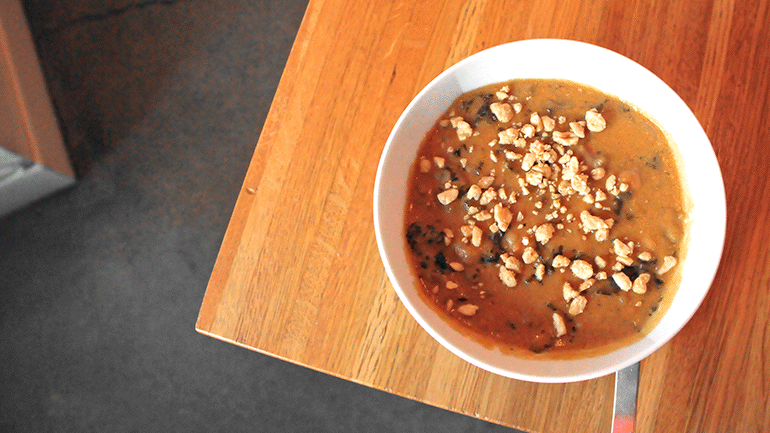
African peanut stew at Pura Vida
Although many soups have long-standing traditions, chefs also borrow liberally from multiple cultures to make new versions of classics.
At Pura Vida, a vegetable-focused, though not completely vegetarian, restaurant in downtown Cleveland, chef and owner Brandt Evans came across the national dish of Ghana, Nkatenkwan, a chicken-and-peanut stew, and wondered how it would work as a vegetarian dish.
He sweats a mirepoix, then adds kale, curry powder, ginger and lemon zest, cooks it for another five minutes and then adds sweet potatoes, cilantro, chunky peanut butter, red curry paste, agave nectar and water and simmers it. He garnishes it with tofu, cilantro and chopped peanuts.
“It became wildly popular and successful,” he said. “People eat it when it’s 85, 90 degrees out on a hot summer day. It surprises the hell out of me.”
He said that like a lot of the food at Pura Vida, it’s filling in a satisfying way.
“You’re almost sushi-full,” he said. “Satisfied, but not busting out of your jeans.”
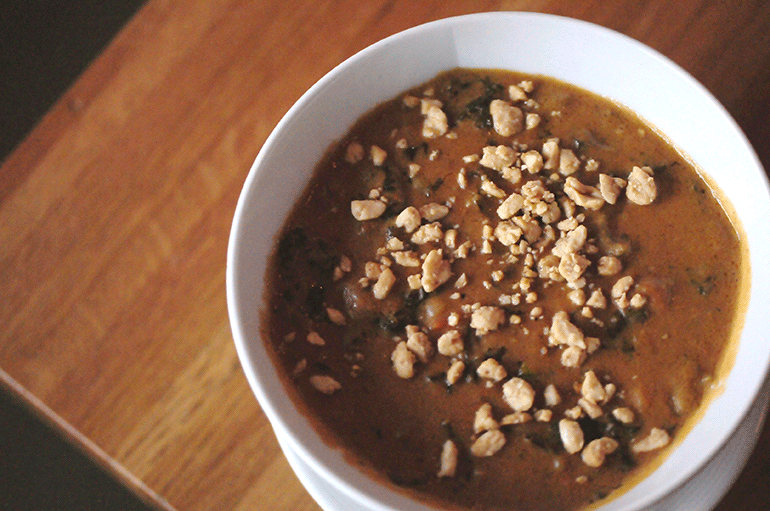
African peanut stew at Pura Vida
Glenda Galvan-Garcia, executive chef of four-unit Granville in Los Angeles, has a background in Latino cooking, but when they took over a former long-standing Jewish deli in West Hollywood next to Cedar-Sinai hospital, she knew she had to come up with a great matzoh ball soup.
She said it wasn’t really that much of a stretch. She grew up eating matzoh ball soup with Jewish friends, “and every culture has a soup with some sort of dumpling and a rich chicken stock. That makes the comfort of this dish so relatable.”
But of course they also had to make it their own. So along with the traditional mirepoix, the soup also has fennel, ginger and shiitake stems.
The soup starts with a chicken stock made with around 20 pounds of chicken bones and four gallons of water. That is simmered and skimmed, and then parsley, peppercorns, bay leaves and garlic are added and the whole thing is put in their Alto-Shaam at 210 degrees Fahrenheit to sit overnight.

Chicken noodle soup with matzoh balls at Granville
Food and beverage director Marc Dix said they don’t want the broth to be overly concentrated, and the slow simmering slowly draws the marrow out of the chicken necks and bones.
The caps of the mushrooms are sautéed in schmaltz, for an extra umami kick, along with green onions. That’s mixed with matzoh meal, eggs and house seasonings to make matzoh balls. Instead of traditional noodles, they use more spoon-friendly orecchiete.
“We started with angel hair but found that we were chasing after the noodles,” Galvan-Garcia said.
The soup was added to the menu at all four locations in March of last year, and the response has been enthusiastic, she said.
“When people talk about their childhood and that it reminds them of it, that’s the best compliment of all,” she said.
The stock is also a key component to the fish head curry soup at Farm in Bluffton, S.C., where chef Brandon Carter starts by sweating a mirepoix, plus some ginger and star anise, in butter and adding the heads of meaty fish such as sheepshead, snapper and grouper. He covers that and steams the fish heads until he can break them apart, which takes around 15-20 minutes. Then he covers them in water and heats until it just starts bubbling. Then he removes it from the heat and adds green aromatics such as kaffir lime leaf and lemon grass and lets it steep for about 45 minutes. Then he strains it, and chills it.
“The gelatin from the heads when the stock cools down pushes the impurities to the top and bottom,” he said. “So you unmold this fish Jell-O and cut the top and the bottom off and you have this great fish stock.”
To make the soup, he toasts garlic and then sweats onion, then carrot, then ginger. Next, he adds a curry paste of chiles and other spices, including local fresh turmeric. He cooks that, adds the stock and then adds chopped greens such as collards or mustard greens that he blanches in water to remove some of the bitterness beforehand.
The soup is a dish that comes and goes on his menu, changing a bit each time. Often he adds fish balls to the dish, made by picking the meat from the heads and making a forcemeat out of it with ginger, garlic and other aromatics, along with salt and herbs such as mint and basil or cilantro, and some egg white to bind it. He poaches them in the broth.
“It’s a great way to utilize what would normally go into the stock or garbage,” he said. “And visually it’s interesting, and the flavor is delicious.”
Contact Bret Thorn at [email protected]
Follow him on Twitter: @foodwriterdiary

